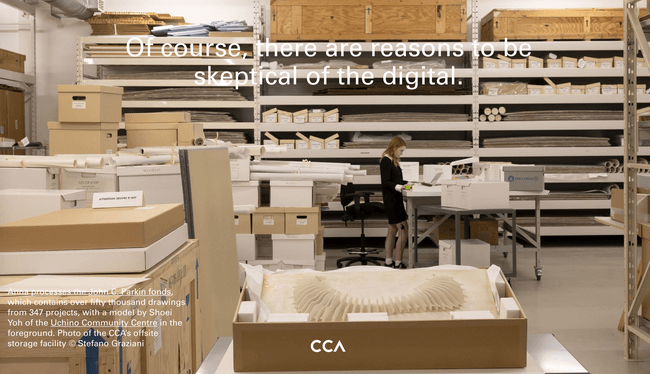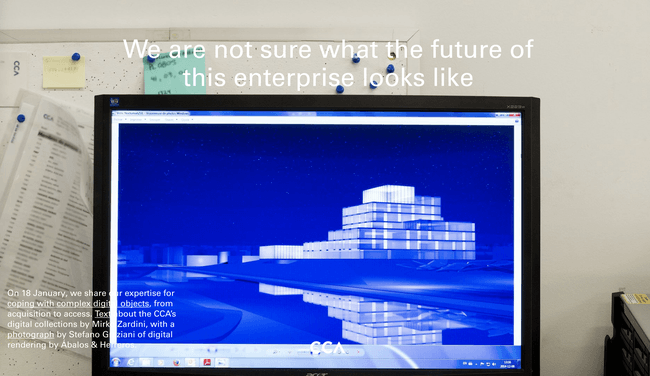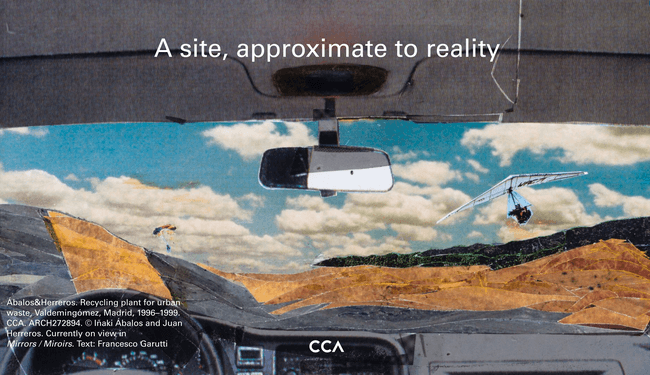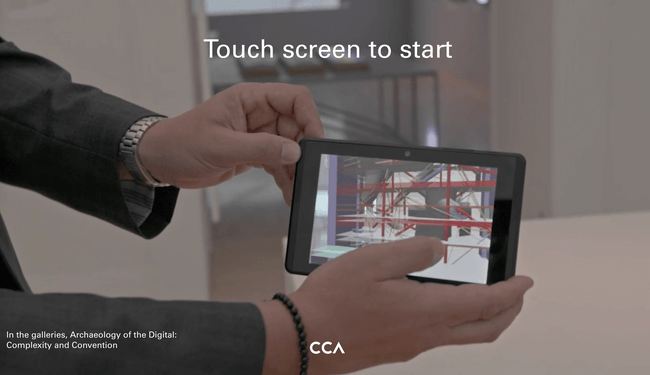Is a Database a Museum?
Mike Pepi revisits what the museum's digitization is for
Sometimes the simplest questions are the most provocative. A few years ago, when it seemed like techno-utopianism was at its height, I collected my thoughts into a text that I titled Is a Museum a Database? Part earnest exploration of media theory, part challenge to the conventional wisdom about the future of the museum, part elaborate troll, the essay captured anxieties of the moment. Or at least that’s what I hoped. The question was a response to the feverish prognostications about the emancipatory role that digital technology could play for museums atoning for centuries of exclusion, colonialism, and omission. Datafication could help them make up lost ground. But this techno-determinist logic was exactly the narrative that Silicon Valley sought to advance. The museum wasn’t immune. By recasting the institution as a mere collection of information, the museum embarked down a road that threatened to fundamentally reconstitute its identity and mission, turning its patrons into further subjects of platform capitalism along the way.
My original provocation touched on how the apparent functionality of a database—any ordered, indexed set of objects stored for retrieval and reference—was being conflated with the historical role of the museum and the larger project of art history. The conversation had started years before with new media theorists like Lev Manovich, Christiane Paul, and Josephine Bosma. While institutions accepted the radical potential of digital media in theory, in practice few were prepared for the intense competition from rival digital platforms. This is because these various digital platforms used media in a way that encroached on the traditional space of the museum—that is, everything from the museum’s now-lapsed role as a broker for images and their meanings to the museum’s function as a leisure activity. Something like this could only occur after “the digital” left the ghetto of new media experimentation and entered the mainstream. The museum became a subject in the larger colonization efforts of platform capitalism, a new economic order where products and services leverage big data, automation, and ubiquitous computing to achieve monopolies in the attention economy. For some, user-centred technology was a welcome democratization of culture. But others were skeptical that the utopian vision of connectivity coming from the private, for-profit technology monopolies like Google, Facebook, Apple, or Microsoft was anything other than a cynical land grab.
The moment under examination involved two reciprocal flows both internal and external to the institution. The museum field was marked by breathless paeans to “the digital.” Administrators, marketers, and even curators were in thrall to the power and influence of connected devices and the limitless engagement afforded by online networks. Museums, therefore, didn’t need much convincing by technology companies before they willingly converted their cultural capital into the preferred formats of digital platforms. By digitizing their holdings, releasing the images through “open access” initiatives, and rapidly reconfiguring aspects of the museum experience to comfort the database query, museum administrators sent a message: the missions of their institutions—their modes of display and methods of scholarship, the means by which they enrich their publics—were secondary to the database’s singular drive for scalability, which powers algorithms and software platforms the world over. In short, digitization was a political act. Who decided that a museum need to scale? And on whose terms would this occur?
When museums opened the door, technology companies were happy to step in. For the private technology corporation, the museum is a laboratory and playground for its new devices. Google’s Art Project has been mapping museums and their collections since 2011; in 2015, the Guggenheim installed one hundred Bluetooth Low Energy iBeacons to track visitors in real time, allowing administrators to study visit patterns and send tips on nearby works of art; and, most recently, the Google Arts and Culture app released a feature that used facial-recognition machine learning to match a user’s selfie to thousands of portrait works from collections around the world, creating a curious scenario in which the same technology used in military-grade artificial intelligence connected casual art lovers to Vermeers.
The artists João Enxuto and Erica Love produce texts and multimedia work aimed squarely at the socio-political implications of the institutional adoption of consumer technology. Much of their work points to a simple but salient fact: in many cases, museums are just following the money. Institutions are pressured to demonstrate impact by foundations and the donor class; impact can be shown only through metrics; metrics are reliably gathered only through measurement and data; and data can be efficiently collected with digital sensors and connected devices integrated into the museum experience. Showing numbers requires an analytics framework pegged to digital tools. Well-funded technology monopolies write off such experiments as “R&D,” but for the institution they can sometimes be a matter of life and death. Pretty soon the institution is so imbricated in the regimes of tracking and sensing that the experience of the visitor fundamentally changes. In the end, it is the institution’s financial precarity that forces them to submit to the business model of surveillance.
Google, of course, isn’t a charity. Their forays into the world’s art holdings via the Art Project are an attempt to reposition the power of art to asymmetrically extract cultural capital from non-profit and state institutions, cloaked as part of a larger project to “organize the world’s information and make it universally accessible and useful.” Yet all efforts are only partly educational, and primarily designed to enrich the platform’s algorithmic hegemony. This much may seem obvious now, but in the nascent moment when “tech” arrived on the scene, digital platforms made a convincing case that these efforts could be an extension of the museum’s mission.
But then came the fall. In software studies, 2017 may be known as the year of the great backlash against Silicon Valley’s general ideology (and practice). It began with the #DeleteUber movement on Twitter. When President Trump announced his “Muslim ban” executive order, the New York City Taxi Alliance called a general strike. Within minutes it became apparent that “scab” Uber drivers would continue to operate as normal. A simple strike illustrated the basic premise of the platform economy: worker solidarity is impossible when individual 1099 contractors are forced to use an extractive third-party application to find their wages. Consternation around the Trump administration catalyzed a host of other ethical and legal scandals throughout Silicon Valley. Also in 2017, Cambridge Analytica came under fire for harvesting the profile data of millions of Facebook users to build highly-targeted segments of potential voters, ultimately leading to an alleged electoral advantage for the Trump campaign. But what most of the public outrage about Cambridge Analytica or Uber scabs during the taxi strike misses is that this behaviour is not an aberration for those platforms, but built into their very business models. Facebook is designed to capture every single user interaction to more finely profile their tastes, which are then auctioned to the highest-paying advertiser. Uber is a semi-illegal, unregulated amateur service that uses location algorithms and bidding frameworks to pay drivers the minimum possible amount at all times. A driver taking an afternoon off in solidarity with a strike could lose a month of earnings.
In the past year, the largest technology companies have made massive ethical blunders and had to answer for their consequences. But as the saying goes, these aren’t bugs; they’re features. With this hindsight, the initial wave of unchecked enthusiasm for the “digital museum” seems naive, an unfortunate lapse of skepticism on behalf of museum thought leaders who bought the marketing hype coming out of Silicon Valley.
Asking the question “Is a museum a database?” requires reliable definitions of both “museum” and “database.” The “museum,” however, seems to wrestle out of most attempts at definition. Museums are, at their most imperious, physical storehouses that make a world through framing objects and structuring possible narratives. This expanded definition lays the groundwork for a comparison to the world’s databases. Massive data centres arrayed around the globe now contain billions of images and texts—and while they do not serve as archives in any public sense, they are physically accomplishing something similar, albeit often in service of private corporations.
As for the “database,” we do have a technically reliable definition. A database must be an indexed collection of information, designed for optimal storage and retrieval. Data is anything “captured” about nature, and a database is the set of those captured things stored, usually on something we could call a computer. All databases consist of tuples and attributes, which are known as “relations.” Relations map to the metadata of any object-oriented collection, so a museum is in a conceptual sense somewhat close to a dataset, just as each object is unique and shares characteristics that are standardized and sortable. But of course that’s not the entire story. As Lev Manovich has shown, databases do not create narratives in themselves, but provide the rules and the structure upon which information may be crafted into a narrative. That narrative is the missing link, be it provided by a curator or an algorithm. A museum may be faulted for telling one particular story over another, while a database might be—incorrectly—viewed as being neutral. As so many have critics of technology have shown, pure, natural data that is somehow immanent to reality is a myth. Every database contains the hidden choices and structures of its maker. Both the museum and the database are not free from sin of imposing bias and narrative by their very structures. But the database, through its extensibility and modularity, conceals this fact, allowing the user to feel empowered by its totality. The algorithms that act upon data produce the impression of choice, of navigation, and subjective clarity in the moment. In this way, a database is the foundation for the fragmentation of the present—we feel as if the digitized museum has seamlessly offered up the bounty of its holdings for the user as a symbol of progress and a triumph over the problems of the old institution. But the cost of this trade-off is steep: it is through the database by which the “emancipated” visitor/user becomes even more entrenched in the algorithmic hegemony of the platform.
Contemporary life is dominated by the ideology of Silicon Valley: we are deeply positivist and utilitarian, biased toward actions supported by consumer brands. The museum, on the other hand, is a cloudy, humanist container, battered down by almost a century of critique. In the lacuna of certainty, the logic of the database reigns. We are flattened, presentist, and allergic to the careful and slow work of contextual framing. A delightful consumer interaction involving technology can erase a history of institutional achievement in the span of a swipe or a tap. Our collective vision has never been more reduced to the “data in front of us.” Thus, at the height of the utopian moment of technology, the database appeared as a “pure” form, functional to a fault, disentangled from the narrative structure imposed on not only art history but also the museum’s gaze.
The museum has been and still is an apparatus for projecting our collective sense of the good life. The museum as it was conceived in the eighteenth and nineteenth centuries was a crucial agent in the West’s progression from feudalism to capitalism to the modern bourgeois concept of the individual. Marxist cultural critic Terry Eagleton reminds us that the aesthetic, the philosophical precursor to the museum, was “the key to a well ordered state.” The ethical work that the Enlightenment museum did for the aristocratic and mercantile interests of Britain and Germany—that is, linking our sense of moral right with the fulfillment of our physical senses—is still of value today, albeit with new players swapped in. In the great retreat of the state, the neo-liberal platform class has even more to gain from a new ideological and moral order of our sensations. So why would this new ruling class treat the museum any differently? Despite its apparent disruption by more agile media, the museum still figures centrally in their desires to transition from late capitalism to platform capitalism, the latter of which claims the database as its single organizing model.
The managers of the world’s ascendant platforms viewed art—and specifically the museological gaze—as the last frontier for colonization. The aesthetic tradition is an object of fascination for the techno-capitalist surveillance apparatus. Engineers of platform capitalism deeply fear the humanistic connection to art because it is the one zone of lived experience that they cannot replicate or reverse engineer into an application. They then can only hope to merely approximate the aesthetic, to draw upon its power to advance the larger project of computational capture and control. For them the museum is a nest of mystery, impervious to technological mediation. Despite centuries of machines, we are still rapt in front of simple charcoal sketch; we seek out art and its contemplative space, which, against all odds, can momentarily exist outside of the everyday. For the engineer, then, the museum is both playground and menace.
By digitization its collections, the datafied museum lays the groundwork for a historical transfer: the function of the museum transitions from the ideological support of industrial capitalism and the bourgeois state to its new historical role: the aesthetic co-conspirator of the full installation of platform capitalism. The reliance on the database severs the aesthetic from its traditional institutional representations and elevates the importance of digital technology. The museum is a defence against the idea that the platform should have any purchase on the aesthetic, that it should mediate our senses. But reducing the museum to a mere shell around what is ultimately just a database is a moral vote for the platform’s ontology, a political act tantamount to ceasing all skepticism of the authority of digital monopolies. The museum is a symbolic stalwart in an age of instant gratification, a commitment to posterity in an age of presentism, and a structure that supports the value of humanity’s lone unique characteristic: the penchant for narrative, uncertainty, and the unknowable in the face of an algorithmic regime careening toward a society built around optimization and measurement.
Given the “fresh canvas” of the new digital institution, we could rightly ask, Who is doing the work of such an institution? What power structures are privileged in this new mode of exchange and production? Who misses out? If the question before was how a museum is more than a pure database at a time when the logic of the database colonizes all forms, the question now, after the fall of the ideological firmament of Silicon Valley, is how the museum might disentangle itself from the lapsed utopian vision of the digital platform. How does the museum persist and sustain its purpose through the thick and thin of platforms, their broad and overwhelming onslaughts and sudden, accelerated retreats? If the museum is increasingly formatting itself as a repository of images accessed and circulated through digital platforms, we may flip the direction of the initial provocation. If before we wondered whether a museum was merely a database, then now we could prepare for a world where we ask, Is a database is a museum? If so, how?
The database is, again, not a museum per se. But in time both forms might come to be indistinguishable. As the museum trades in “user experience” and coughs up new data in real time, it can be confronted as a set of inputs and outputs. So the inversion of the title is another way of asking, How far gone are we? Must we now seek the heterotopic moments in the structure of our platforms’ data? Can we wrest the institutional character out of the mediated world we now engage with? What might this require? Or do we fold back the platforms that have been remodelled to address the aesthetic function of the museum? Do we leave Facebook—boycott, divest, drop out? A return to a pre-digital moment in the history of museums might not mean a total abandonment of digital tools, but a repurposing of the most powerful tools along the lines of a museological form that will have to survive the ephemeral life of its representational mode in software.
A museum as pure database is as unfathomable as approaching a database like a museum. We can, however, have an institution that is digital. But it cannot be modelled on the venture-capitalist logic of value extraction and surveillance. We won’t be fooled again. Such is an ambitious world to build, but the hardest work has already been done. In the time since 2010 we have recognized that we don’t want to build features on top of a platform-capitalist monopoly, but instead desire to enlist its machines for the augmentation, not replacement, of the institution’s singular character.
This text appears in our book The Museum Is Not Enough (2019).



